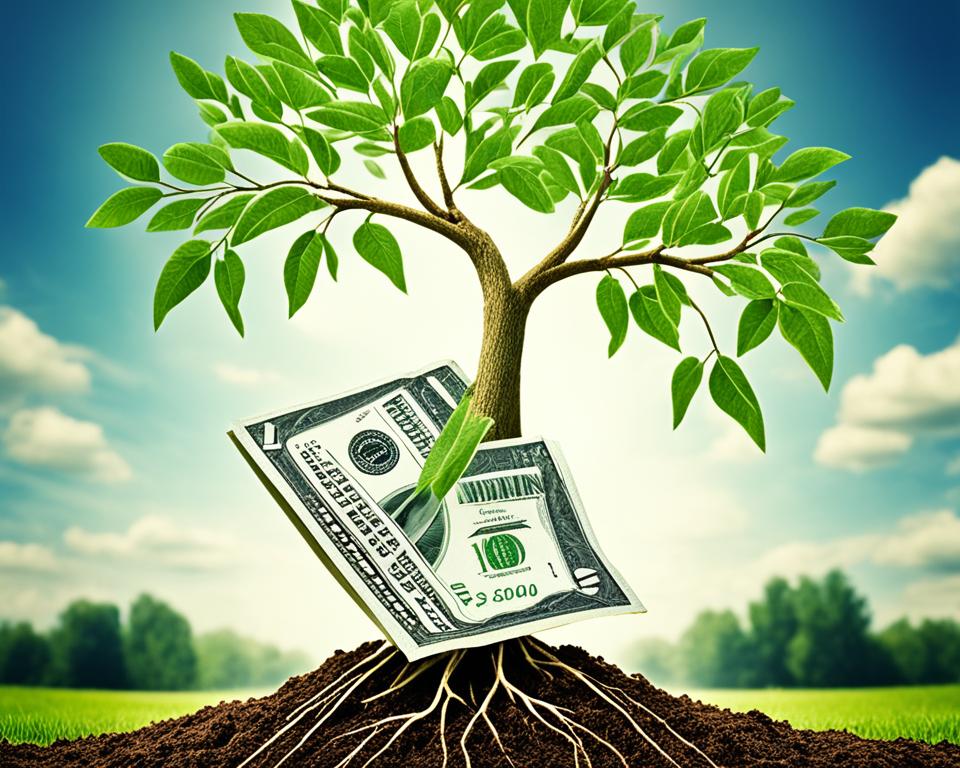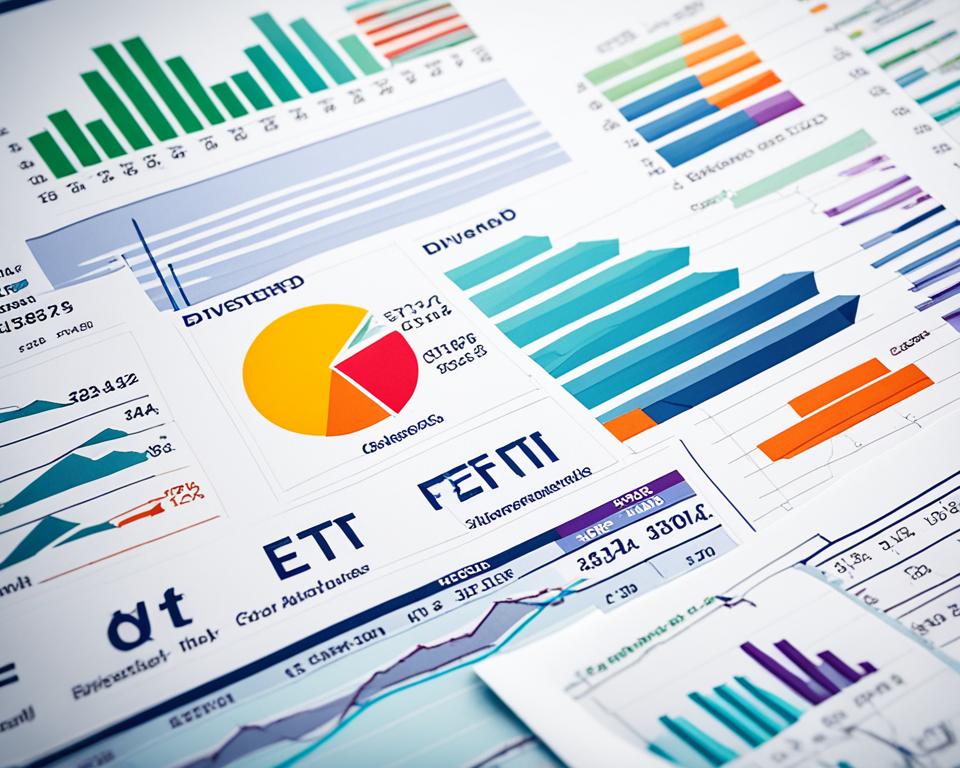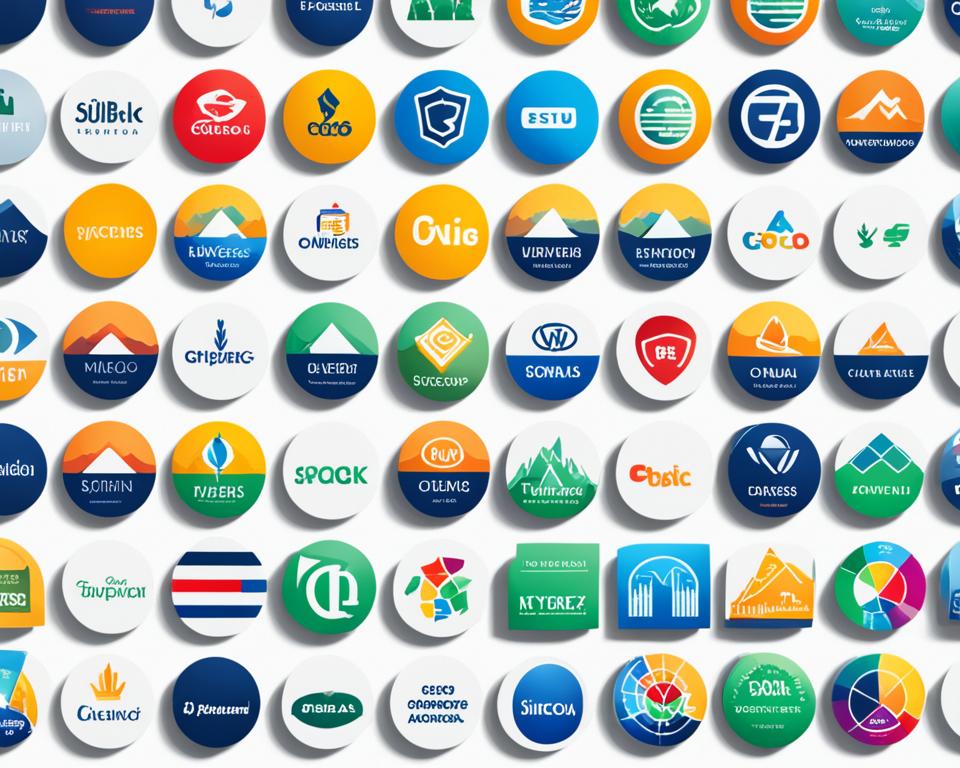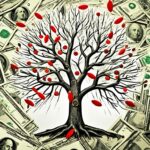Are you aiming to maximize dividend income as part of your financial journey? Understanding the ins and outs of dividend income strategies is fundamental to realizing your investment goals. Wise words from investment guru Ben Graham assert that knowledge is critical—knowing what you’re investing in and why. This provokes a more granular look into the art of building an income-generating portfolio, far from the hollow allure of get-rich-quick enticements, and steers you toward a path of steady fiscal sufficiency during your retirement years.
Investing in dividends isn’t just about picking stocks with attractive yields. It’s a delicate balance, tailored to counteract the financial erosion caused by inflation and market risks. A diversified approach across various industry stocks ensures your investment eggs aren’t all in one basket, bracing your income against sector tremors. This introduction to dividend investing primes you to reflect on whether dividends alone can sufficiently pad your financial future after adjusting for taxes and the persistent creep of inflation.
Key Takeaways
- Understanding dividend strategies is essential to creating a sustained income stream.
- Patiently curating a diversified portfolio is key to longevity in earning capacity.
- Regular and special dividends play unique roles in investor income.
- Equity portfolios should grow dividends to outpace inflation and amplify returns.
- The pursuit of dividend income should be balanced with considerations for financial safety and market volatility.
- Dividend reinvestment is a potent tool for compounding wealth over time.
Understanding the Power of Dividend Investing
Embarking on the journey of dividend investing invites you into a world where your portfolio can work for you, creating an alternative stream of income that complements your investment growth. This foundational element of building wealth is more than just choosing stocks—it’s about understanding the symbiotic relationship between companies and their shareholders through dividend disbursement.
As you consider incorporating dividend-paying stocks into your portfolio, the importance of fundamentals cannot be overstated. Well-executed dividend growth strategies set the stage for not only current, but also future financial success.
Exploring the Basics of Dividends
At their core, dividends are a share of a company’s profits, doled out to investors as a tangible reward for their trust and investment. The basics of dividends are straightforward—companies with surplus earnings often return a portion back to shareholders either in the form of cash payouts or additional shares of stock. This gesture reinforces the relationship between a corporation and its investors, establishing a predictable return that often reflects the company’s economic strength and commitment to value sharing.
How Dividend Stocks Have Historically Outperformed
Diving into historical performance, stocks known for their consistent dividend payouts have a robust track record of success. These stalwarts of the financial markets have not only provided investors with steady income, but have often surpassed their non-dividend-paying counterparts through both thick and thin market stretches. The resilience and financial stability embedded within these companies often translate into a safety net that can potentially grow in value, catching the eye of those who prioritize dividend investing as part of their broader financial picture.
- Dividend-paying companies signal financial health and reliability.
- Long-term capital gain potential aligns well with steady dividend income.
- Investors should carefully assess dividend history and financial metrics.
By including dividend growth stark players like the Procter & Gamble’s and Johnson & Johnson’s of the world in one’s portfolio, an investor steps into an arena where future prosperity is harnessed by companies with a propensity for profit and a history of sharing it.
The Art of Building a Dividend Portfolio
As you explore the realm of dividend investing, it’s essential to realize that building dividend portfolio requires more than selecting stocks with high yields. It demands a strategic approach that combines dividend portfolio management with fundamental investment principles. Success in this endeavor is rooted not only in the art of selecting the right assets but also in setting appropriate investment criteria and engaging in smart diversification strategies. Let’s delve into the crucial steps that form the foundation of a robust income-generating portfolio.
Setting the Right Investment Criteria
When establishing your dividend portfolio, you must first outline clear investment criteria. Consider factors such as the dividend yield, which reflects the percentage of your investment returned annually through dividend payments. Closely examine payout ratios to ensure that your selected companies are not exhausting their earnings on dividends alone. Perhaps most significantly, scrutinize the financial stability of potential investments, seeking out companies with a solid track record and a future-oriented business model.
Diversification Across Industries and Sectors
Diversification is not just a buzzword; it’s a protective measure against the volatility and unpredictability inherent in the markets. By spreading your investments across different industries and sectors, you minimize the risks associated with any single area of the economy. Let’s consider a portfolio with a balanced representation from technology, healthcare, consumer goods, and energy; such a mix can help withstand market fluctuations and sector-specific downturns that might otherwise jeopardize your dividends.
A well-balanced dividend portfolio blends companies from a variety of sectors, curating a selection that’s built to last through economic cycles. With your eyes set on long-term growth, our guide below outlines how varying industries fare in terms of average dividend yield, stability, and growth prospects — imperative insights for any serious income investor.
| Industry | Average Dividend Yield | Stability | Growth Prospects |
|---|---|---|---|
| Technology | 1.5% | Medium | High |
| Healthcare | 1.8% | High | Medium |
| Consumer Goods | 2.2% | High | Medium |
| Energy | 3.5% | Low | Medium |
Reflect on your personal investment goals and assess whether your portfolio’s current state aligns with these criteria. Striking a balance is a nuanced endeavor; you are the curator of your financial future. Remember, while diversity adds complexity, it’s this intricate fabric that strengthens the resilience of your investment quilt. With the proper blend of yield, stability, and growth, your dividend portfolio can be a testament to the power of wise investing and prudent dividend portfolio management.
Decoding the Dividend Yield: A Path to Income
When you embark on your quest for maximizing dividend income, the dividend yield stands as a key indicator that must not be overlooked. This financial term may sound mystifying at first, but it’s essential to understanding just how much benefit you can reap from your investments. Simply put, the dividend yield is the ratio of the company’s annual dividend to its current share price, measured as a percentage, signifying the income you would earn for every dollar invested.
However, it’s not all straightforward — yields aren’t static. They are subject to the whims of fluctuating stock prices and the strategic decisions companies make about their payouts. High yields can gleam like treasure, but they may also herald greater risks of decreased payouts or volatility.
Focused on achieving dividend yield optimization? A sound strategy involves looking beyond just the yield percentage. You’d be wise to seek out companies with modest but sustainable yields, often a hallmark of stable financial health and strategic dividend growth. The balance sheet of a company should be scrutinized as well — strong balance sheets often portend the ability to continue paying dividends, even in leaner times.

Let’s delve into a table that contrasts the dividend yield spectrum, comparing the allure of high dividend stocks against the stability of modest-yielding companies:
| Dividend Yield Type | Typical Characteristics | Investor Considerations |
|---|---|---|
| High Dividend Yield | Possibly higher risk and volatility | Scrutinize company’s long-term payout viability |
| Moderate Dividend Yield | Strong balance sheets, historical consistency in payouts | Check for a stable track record and dividend growth |
| Low Dividend Yield | May indicate reinvesting profits for growth | Consider long-term capital appreciation potential |
The goal is to construct a portfolio that imbues you with a sense of financial security, all the while nurturing a consistent, growing stream of income. Be cautious of yields that shine like fool’s gold; this could signal a company stretching its financial capabilities thinly. Instead, opt for those with a strong history of incremental increases in their dividend distributions — a sign of both confidence and calculated generosity.
In your strategic quest for maximizing dividend income, balance is of the essence. You’re aiming for the golden mean between pursuing high yields and ensuring those yields are viable in the long run. Going for gold doesn’t necessarily require the alchemist’s touch, just a careful, knowledgeable approach and perhaps a dash of patience.
Dividend Growth Strategies: Key to Long-Term Wealth
As you navigate the investment landscape with a focus on building sustainable wealth, consider incorporating dividend growth strategies into your portfolio. This approach hinges on selecting dividend growth stocks, a category that has historically provided investors with a reliable source of increasing income over time. Such stocks are more than assets; they represent confidence in a company’s ongoing operational success and future outlook.
When aligned with a deep understanding of an entity’s financial fundamentals, these strategies entail more than mere speculation; they are informed decisions that leverage a company’s performance record. The goal here is not just to seek immediate returns but to plant the seeds for enduring prosperity and long-term wealth.
Identifying Dividend Growth Stocks
Identifying potential dividend growth stocks is akin to predicting the most fertile soil for planting your financial seeds—the ones most likely to yield a growing harvest year after year. These are typically robust companies known for their consistent pattern of incrementally increasing dividend payouts. Companies classified as Dividend Aristocrats are prime examples, having raised their dividends consistently for over 25 years. Renowned firms like 3M, Procter & Gamble, and Johnson & Johnson are hallmarks of this select group. Their increased dividends are a beacon of their business’s strength and investor-centric philosophy.
To pinpoint these lucrative opportunities, you need to keep an eye on a mix of historical performance, company earnings, and future earnings potential. Investments in these stocks should resonate with your aim for solidifying a robust income stream that has the potential to withstand the tests of time and economic variability.
Understanding Dividend Growth Rate and Its Impact
The dividend growth rate is an essential metric that gauges the annual percentage increase in a company’s dividend payout. It is a clear indicator of not just present vitality but also future prospects. A healthy, steadily increasing dividend growth rate can combat the erosion of your purchasing power due to inflation, maintaining or even enhancing the true value of your investment income over the years.
Here’s a table illustrating the impact of different dividend growth rates on future income, demonstrating the compounding effect dividends can have over a 20-year period:
| Initial Dividend Yield | 5-Year Growth Rate | 10-Year Growth Rate | 20-Year Projected Income* |
|---|---|---|---|
| 3% | 5% | 6% | $12,000 |
| 2% | 7% | 9% | $14,500 |
| 4% | 4% | 5% | $19,200 |
*Assumes an initial investment of $10,000. The projected income figures are for illustrative purposes only and are not predictions of future performance.
When you select a company with a strong dividend growth rate, you’re effectively choosing a vehicle for compound growth, where reinvested dividends purchase more shares, leading to larger dividend payments, and the cycle continues. This is the core of dividend growth strategies that can help fortify your financial future. Your willingness to invest with a forward-thinking mindset not only empowers you to nurture long-term wealth but also envelops your portfolio with a layer of resilience against fiscal fluctuations.
Maximizing Dividend Income Through Reinvestment
The path to maximizing dividend income markedly improves when you implement the strategy of dividend reinvestment. This method not only capitalizes on your current holdings but also sets the stage for enhanced future gains through the wonders of compound growth. As you explore the various avenues to increase your investment portfolio’s potential, Dividend Reinvestment Plans, commonly known as DRIPs, emerge as a pivotal tool in your arsenal of wealth-building tactics.
The Benefits of Dividend Reinvestment Plans (DRIPs)
DRIPs serve as a vital ingredient in the recipe for financial success. They allow you to automatically use your dividends to purchase additional shares of stock, often sans any commission fees. This method is a beacon of efficiency and practicality, bolstering your investments’ growth potential without requiring additional outlays from your pocket. Whether a seasoned investor or a beginner charting the waters of portfolio management, DRIPs offer an empowering way to accelerate your journey toward financial abundance.
Compound Growth: Reinvesting versus Cash Out
Compare the decision to cash out dividends with the choice to reinvest those dividends, and the difference becomes strikingly clear over time. Reinvestment sparks a cycle of purchasing more shares, which, in turn, generates a greater quantity of dividends, progressively boosting the yield on your original investment. The power of compound growth shines through this strategy; by reinvesting, you are effectively planting seeds for a more bountiful financial future—a future where dividend reinvestment transforms modest beginnings into an orchard of prosperity.
Consider this illustrative table, which models the potential growth of reinvested dividends compared to dividends that are cashed out:
| Years | Initial Investment | Dividend Yield | Reinvested Value* | Cashed Out Value* |
|---|---|---|---|---|
| 5 | $10,000 | 4% | $12,166 | $10,000 |
| 10 | $10,000 | 4% | $14,802 | $10,000 |
| 20 | $10,000 | 4% | $21,911 | $10,000 |
*The reinvested and cashed out values are hypothetical and do not account for taxes or changes in dividend yield over time. The table is designed to illustrate the impact of compound growth over long periods of investment.
In conclusion, if you’re considering an approach to compound your growth and truly embrace the full potential of your investments, become closely acquainted with DRIPs and the undeniable advantages of dividend reinvestment. Not only do they simplify the process of increasing your share ownership, but they also launch you onto a trajectory of accelerated wealth creation—one that your future self will undoubtedly thank you for.
Risks and Rewards: Evaluating High Dividend Stocks
As you sift through the myriad of investment opportunities, you may find yourself drawn to high dividend stocks for their apparent lucrative returns. While these stocks often shimmer with the promise of hefty payouts, savvy investors understand that not all that glitters is gold. It’s essential to peel back the veneer of high yields to assess the true backbone of dividend sustainability. Let’s navigate the terrain of risk and reward as it pertains to high dividend stocks, ensuring your trek toward wealth accumulation is on solid footing.
High Yield Versus Dividend Sustainability
On the surface, stocks that boast high dividends may seem like an attractive inclusion to bolster your portfolio’s income. However, the real crux lies in the sustainability of these dividends. A company offering a yield that vastly outstrips its peers could be flashing warning signals of underlying financial distress or a potential cut in future payouts—a scenario known colloquially as the yield trap. To differentiate between enduring and transient dividends, you must look beyond the facade of high yields, scrutinizing the health of the company’s earnings and its ability to maintain generous dividends over time.
An examination of the company’s payout ratio, which indicates the proportion of earnings paid out as dividends, is imperative. A high payout ratio, especially one exceeding 100%, could spell danger, signalling that the company may be funding the dividend at the expense of its financial health or growth prospects. A sensible balance between a generous yield and a payout ratio that leaves room for growth and unforeseen challenges is a tell-tale sign of dividend sustainability.
Navigating the Yield Trap
Falling for the allure of a yield trap can be detrimental to your investment goals. An attractively high dividend yield can often mask the precarious financial position of a company, where the high yield is a result of a declining stock price rather than robust performance. To adeptly sidestep yield traps, you must be willing to delve deep into company fundamentals:
- is the company’s industry on a growth trajectory or facing secular headwinds?
- Does the business model have a competitive edge that ensures persistent profitability?
- Are the balance sheets fortified enough to weather economic downturns?
Establishing a forward-looking perspective that values holistic analysis over historical payouts is critical in identifying high dividend stocks that can reliably contribute to your income stream. For instance, sectors such as utilities and consumer staples often sport reliable dividends due to their consistent demand, while industries subject to rapid technological change or regulatory shifts might offer high yields but with greater risks attached.
When it comes to dividend sustainability, the adage “if it’s too good to be true, it probably is” holds weight. Your goal should be to amass a collection of high dividend stocks that serve as a fortress of reliability, rather than a mirage that could evaporate amid market turbulence or company misfortune. By doing so, you safeguard your portfolio against the deceptive grasp of the yield trap.
Utilizing ETFs and Mutual Funds for Diverse Dividend Exposure
When you’re looking to broaden your investment horizon, dividend-focused ETFs and mutual funds offer a compelling avenue for diverse dividend exposure. These financial vehicles bundle a collection of dividend-yielding stocks, laying out a diversified spread in a single investment. The attractively convenient package not only paves the way for risk management but also serves as a cornerstone for savvy fund management.
Choosing the Right Dividend-Focused Funds
To steer your investments towards success, mindful selection of the appropriate dividend-focused ETFs and mutual funds is crucial. The factors you’ll want to take into account include the fund’s historical yield performance, the steadiness of its dividend payouts, and the growth potential it nourishes for the future. Moreover, it’s insightful to inspect the spectrum of companies included in the fund to assure a balanced mix resonating with resilience and opportunity.
Passive Versus Active Dividend Fund Management
Deciding between passive and active fund management lies at the heart of this strategic venture. Passive funds are typically less costly and mirror the composition of a predefined index. On the flip side, active funds are curated by specialists who adeptly navigate market trends, dynamically adjusting the portfolio to capture potential overperformance. The question for you is one of alignment: Does the investment strategy of the fund harmonize with your own financial aspirations, risk tolerance, and timeline?
To further guide your decisions, consider the compelling distinctions encapsulated in the table below, analyzing examples of both passive and active funds with a focus on dividend returns:
| Investment Fund | Management Style | Expense Ratio | Average Dividend Yield |
|---|---|---|---|
| Vanguard Dividend Appreciation ETF (VIG) | Passive | 0.06% | 1.71% |
| Fidelity Strategic Dividend & Income (FSDIX) | Active | 0.69% | 2.34% |
| iShares Select Dividend ETF (DVY) | Passive | 0.39% | 3.58% |
| T. Rowe Price Dividend Growth Fund (PRDGX) | Active | 0.64% | 1.88% |
Each fund carves out its own philosophy and approach to delivering returns through dividends. Whether it’s the lean indexing method of Vanguard’s low-fee ETF or the prospect of strategic outperformance from a fund like Fidelity’s, the pathways to generating and growing dividend income are manifold. Acknowledge your investment character and let it be the beacon as you navigate the lush terrains of dividend-focused ETFs and mutual funds—a journey poised to fortify your financial future with the fruits of diverse dividend exposure.
Mitigating Risks with Dividend Safety Measures
If you’re on a quest to maximize your dividend income, understanding and managing the risks involved with high dividend stocks is non-negotiable. Dividend safety is not a term thrown around lightly; it forms the bulwark against volatile market conditions and ensures the sustained health of your investment. By evaluating high dividend stocks and conducting rigorous financial checks, you can steer clear of undue dividend stocks risks and buttress your portfolio against economic strains.
Chief among these financial checks is a thorough analysis of a company’s payout ratio. This metric provides insight into the portion of earnings allocated to shareholders as dividends. Ideally, a lower payout ratio suggests a company has cushioning to maintain dividends should earnings experience a hit. Conversely, a high payout ratio might signal a stretched dividend policy, potentially jeopardizing future payout sustainability.
Similarly, a company’s debt level is a critical factor when assessing dividend safety. A manageable level of debt insinuates that a company can uphold its dividend commitments without compromising its financial health. Elevated debt, however, could restrict a company’s ability to weather economic downturns and maintain dividend payouts.
Moreover, keen attention must be paid to the economic indicators that presage shifts in dividend-paying sectors. A strategic investor will play the long game, tracking and responding to these shifts to modify their portfolio for optimal defense against risks. This proactive stance on dividend safety is essential for preserving your income stream.
Let’s depict the importance of these checks with a comparative table that underscores different safety parameters for high dividend stocks:
| Dividend Safety Parameter | Description | Significance |
|---|---|---|
| Payout Ratio | Percentage of earnings paid to shareholders as dividends | Lower ratios suggest more room to sustain dividends |
| Debt Level | Amount of debt relative to company assets and equity | Lower debt signifies stronger financial health and dividend safety |
| Earnings Consistency | Stability of earnings over an extended period | Consistent earnings point to reliable dividend payments |
| Sector Performance | Overall health of the industry which the company operates | Robust sectors generally indicate a safer dividend environment |
It’s important to remain vigilant and keep abreast of sector-specific news and economic trends that could imperil your dividend flow. After all, a well-informed investor isn’t caught off-guard by unforeseen market fluctuations—they anticipate and adapt, ensuring their investments continue to provide a stable income.
In summary, achieving dividend safety is not about avoiding risks altogether; rather, it’s about strategically managing them. Your fiscal acumen in evaluating high dividend stocks and judicious risk assessment will determine the robustness of your income stream. Remember, in the financial playbook, safeguarding against risk is as critical as pursuing growth.
What strategies can investors use to maximize their dividend income
As you look to enhance your dividend income, understanding and utilizing tax efficiency strategies is essential. It’s not just about the dividends you receive; it’s also about how much you get to keep after taxes. By optimizing for tax efficiency and conducting a robust financial stability analysis, you ensure that your investments work favorably within the scope of both tax obligations and market uncertainties.
Integrating Tax Efficiency into Your Dividend Strategy
Investing with tax efficiency in mind is a sophisticated approach that can substantially enhance the net income from your dividends. Consider positioning investments in tax-advantaged accounts, such as IRAs and 401(k)s, where growth can be tax-deferred, or even tax-free, which includes the dividends received from the stocks within these accounts. In addition, focusing on stocks that offer qualified dividends can result in more favorable tax treatment, as they are taxed at capital gains rates rather than ordinary income rates.
To further refine your strategy for tax efficiency in dividends, you might also implement tax-loss harvesting to balance out capital gains. This involves selling securities that have experienced a loss and offsetting the realized gains that your dividends have contributed to.
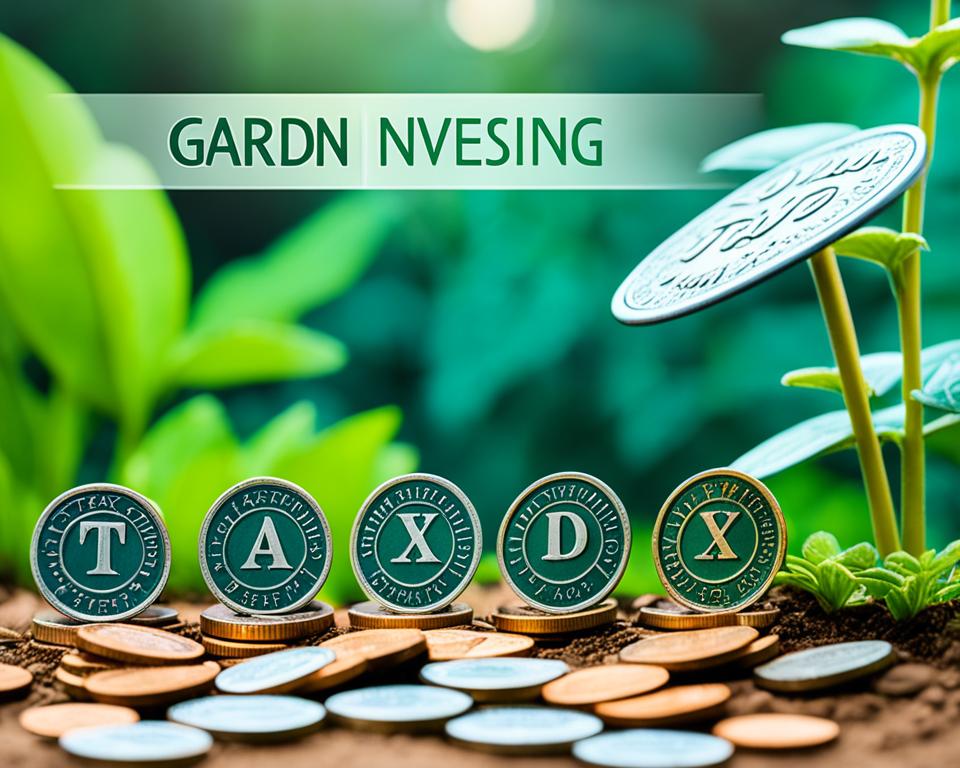
Effective asset location is another critical element in maximizing dividend income. This means placing your high-dividend-yielding investments in tax-advantaged accounts and keeping investments with lower dividend yields in taxable accounts. Here’s an illustrative example of asset location considerations in a diversified portfolio:
| Investment Type | Account Type | Explanation |
|---|---|---|
| High Dividend Stocks | Tax-Advantaged Account (IRA/401(k)) | Defers or avoids taxes on dividends |
| Growth Stocks (Lower Dividends) | Brokerage Account | Long-term capital gains are taxed at lower rates |
Analyzing Dividend Payout Ratios and Financial Stability
Understanding dividend payout ratios is crucial for evaluating whether a company’s dividend is sustainable. The ratio, calculated by dividing the dividend per share by the earnings per share, gives insight into how much income the company returns to shareholders versus reinvesting back into its growth. Conservative payout ratios generally suggest that the company has ample room to maintain or even increase dividends in the face of economic shifts.
Simultaneously, conducting a financial stability analysis can help identify companies that are less likely to cut dividends during market downturns. By examining balance sheets, income statements, and cash flow statements, you can gain a better understanding of a company’s ability to endure economic cycles while continuing to reward shareholders. Below, we see a snapshot of financial indicators that can help assess a company’s financial health and, by extension, the stability of its dividends:
| Financial Indicator | Description | Impact on Dividend Stability |
|---|---|---|
| Debt-to-Equity Ratio | A measure of a company’s financial leverage | Lower ratios may indicate a stronger ability to sustain dividends |
| Free Cash Flow | Cash available after accounting for capital expenditures | Positive free cash flow can support ongoing dividend payments |
| Earnings Growth | Year-over-year increase in earnings | Consistent earnings growth points to a potentially growing dividend |
| Return on Equity | Profitability measure showing how effectively management uses shareholder capital | Higher ROE can signal efficient operations and dividend reliability |
By marrying the concepts of tax efficiency in dividends with a meticulous approach to analyzing dividend payout ratios and conducting financial stability analysis, you can fortify your portfolio against unnecessary risks and ensure a consistent stream of dividend income for the years to come.
Income Versus Total Return: Balancing Your Dividend Approach
When you venture into the world of investing with a focus on dividend income strategies, weighing the desire for immediate income against the pursuit of total return becomes a pivotal consideration. High dividend yields can certainly appear attrative, painting a picture of instant cash flow. Yet in the grand scheme, it’s total return – the sum of both dividend income and capital appreciation – that paints the full portrait of your investment’s success.
The art of balancing investment approach lies in the strategic blend of securities that don’t just lure with high yields but also promise the potential for capital growth, crafting a robust portfolio designed for longevity. This balancing act calls for a keen allocation of assets, taking into account factors such as your investment horizon, income requirements, and tolerance for risk.
Diversification, both across and within asset classes, is the key promoter of balance in any investment strategy. In practice, this means participating in a broad array of dividend avenues, from high-yield blue chips to growth stocks with burgeoning dividend prospects. To illustrate, here’s a snapshot of how different stock types contribute to the balance between immediate income and long-term total return:
| Stock Type | Dividend Yield Characteristic | Contribution to Total Return |
|---|---|---|
| Blue-Chip Stocks | Steady, high yields | Immediate income and stability |
| Growth Stocks | Lower initial yields, with growth potential | Capital appreciation, increasing dividends over time |
| International Stocks | Varied yields, exposure to global markets | Diversification and potential for market outperformance |
While it’s tempting to anchor your portfolio to the siren song of high yields, a far-sighted investor firms their grip on a broader set of sails. With a prudent investment discipline, you remain steadfast at the helm, piloting a course that sustainably harnesses winds of both immediate dividends and the gusts of growth that drive total return, setting you toward the destination of enduring wealth.
Navigating Market Fluctuations with Dividend Stocks
When faced with the unpredictable nature of market fluctuations and market volatility, savvy investors often turn to dividend stocks for their relative stability. These assets serve as financial ballast, especially during the tumultuous seas of bear markets. There’s a comforting consistency to dividend stocks that can provide a steady flow of income even when stock prices are in a state of flux.
Dividend Stocks As a Buffer in Bear Markets
During bear markets, where stock prices fall 20% or more from recent highs, many investment portfolios suffer significant reductions in value. Dividend stocks, however, often stand out for their stability amidst this decline. While nothing in the market is without risk, companies with a strong track record of paying dividends usually have resilient financial foundations that can withstand economic downturns, making them appealing to conservative investors.
The Role of Dividend Stocks in Market Volatility
In times of high market volatility, dividend stocks can be a refuge for investors seeking to mitigate potential losses. The regular income from dividends can help offset price swings and, in some cases, the reinvestment of these dividends can allow you to accumulate more shares at lower prices, setting the stage for a recovery once market conditions improve. The dividend stocks stability therefore acts as a financial shock absorber, smoothing out the ride through uncertain markets.
Consider incorporating a range of dividend stocks into your portfolio as a strategic move to navigate market fluctuations. This not only primes you for potential income during downturns but also positions you to benefit from eventual market recoveries. With a solid grasp of their protective attributes, dividend stocks can help you maintain a semblance of control in markets that seem anything but predictable.
Adapting Your Dividend Strategy Over Time
As the economic landscape shifts and your personal goals evolve, so too should your approach to dividend investing. Aligning your dividend strategy with life’s inevitable changes is key to maintaining an edge in a cycle-driven market. Whether it’s gearing up for retirement or recalibrating after a market swing, agile adjustments to your portfolio can support both current and future needs.

Adjusting for Life Stages and Economic Cycles
Time doesn’t stand still, and neither should your investments. As you transition through different stages of life, your focus may gradually shift from growth to income, mirroring your changing financial requirements. This transition typically sees a portfolio adjustment from growth-oriented stocks to those that offer higher dividend yields. As retirement approaches, the requirement for a regular income stream becomes more pronounced—prompting an increased allocation to income-generating assets. Here’s a breakdown of portfolio adjustments one might consider across different life stages:
| Life Stage | Growth Focus | Income Focus |
|---|---|---|
| Early Career | High | Low |
| Mid Career | Moderate | Moderate |
| Approaching Retirement | Low | High |
Complementing life stage adjustments, recognizing and reacting to economic cycles is crucial. For instance, certain sectors may flourish or underperform depending on the phase of the cycle, affecting dividend payouts and stock performance. By identifying these patterns, you can optimize sector weighting in your portfolio to harness economic opportunities and sidestep downturns.
The Importance of Staying Informed and Proactive
Making informed investment decisions isn’t just about analyzing numbers; it’s about staying updated with market trends, regulatory changes, and sector shifts. In our fast-paced world, economic conditions can turn on a dime—rendering yesterday’s winning strategy less effective today. It’s not enough to set a course and forget; successful dividend investors frequently review and adapt their strategy to align with current market realities.
Immersing yourself in financial news, earnings reports, and dividend announcements equips you with the knowledge to act proactively. This might mean trimming positions in overvalued sectors or bolstering holdings in undervalued industries poised for a rebound. The upshot is that a hands-on approach can preserve and enhance your dividend inflow despite economic headwinds or market volatility.
Ultimately, adapting your dividend strategy is an ongoing process that demands attention, flexibility, and a proactive mindset. By responding to life’s changes and economic cycles with a steady hand, you can secure a stream of dividend income that supports your financial journey, every step of the way.
Conclusion
In the pursuit of dividend income optimization, you’ve navigated through the intricate intricacies of yields, growth patterns, and robust investment strategies. As we draw this exploration to a close, remember that the cornerstone of achieving a reliable, income-generating portfolio lies in your understanding and application of these concepts. Patience and diversification have emerged as non-negotiable virtues, essential for weathering the ebb and flow of market sentiments and fostering resilient investments capable of generating passive income.
Managing your portfolio with acute foresight positions you not solely as an investor but as a strategic planner. This journey mandates a balance between seeking immediate returns and cultivating capital growth prospects. Tax efficiencies, a nuanced understanding of dividend dynamics, and a well-timed response to economic indicators are not just tactics, but essential pillars sustaining your financial edifice.
As you continue to refine your approach and adapt to both market and personal shifts, you propel yourself toward a future of not just financial sufficiency but abundance. With dedication to a carefully curated, flexible dividend strategy, the seeds you plant today have the potential to bear the fruit of enduring, substantial rewards, enriching your financial tapestry for years to come.
FAQ
What strategies can investors use to maximize their dividend income over time?
To maximize dividend income, investors should focus on building an income-generating portfolio that includes a mix of high-dividend stocks, growth, and sustainable dividend-payers. Key strategies include dividend reinvestment, diversification, careful selection of dividend growth stocks, understanding and optimizing dividend yield, and continuously staying informed to adapt the strategy over time.
What are the basics of dividend investing?
Dividend investing involves placing funds into dividend-paying stocks that provide a regular income stream. Dividends are profits shared by companies with shareholders and signal financial health. This strategy can generate steady income and can be an integral part of one’s long-term wealth-building plan.
How have dividend stocks historically outperformed other investments?
Historically, dividend stocks have outperformed other investments by providing consistent income and potential for capital appreciation. Companies that pay dividends tend to be financially stable and can offer good total returns over time, with their stocks typically rising in value as the company’s earnings grow.
What criteria should be considered when building a dividend portfolio?
When building a dividend portfolio, investors should consider criteria such as desired dividend yield, payout ratios, financial stability of the companies, dividend growth history, and the balance between income and total return. Setting these criteria helps create a tailored portfolio that meets your long-term income goals.
Why is diversification across industries and sectors crucial in dividend investing?
Diversification is crucial because it spreads the risk across different industries and sectors, reducing the impact of downturns in any single area. Diversifying your dividend portfolio can help maintain a steady income flow even when certain sectors are underperforming.
What is dividend yield and how can investors optimize it?
Dividend yield is the ratio of a company’s annual dividends to its stock price, indicating the income you’d get for each dollar invested. Optimizing yield involves selecting stocks with sustainable dividends, avoiding high-yield traps, and considering the company’s long-term financial health.
What are dividend growth strategies?
Dividend growth strategies focus on investing in companies with a history of consistently increasing their dividends. This approach can lead to higher income over time and help offset inflation, contributing to long-term wealth creation.
How can dividend income be maximized through reinvestment?
Dividend income can be maximized through reinvestment by using Dividend Reinvestment Plans (DRIPs), which automatically use dividends to purchase more shares of the stock. This compounding effect increases the number of shares you own and, consequently, your dividend income over time.
What are the risks and rewards of investing in high dividend stocks?
High dividend stocks can offer attractive yields but often come with greater risks. High yields may indicate financial distress or an unsustainable payout, so it’s important to analyze the company’s financial health and dividend sustainability before investing.
How can ETFs and mutual funds be used for diverse dividend exposure?
ETFs and mutual funds focused on dividends can provide instant diversification across a range of dividend-paying stocks. These funds can mitigate risk and make dividend investing more manageable, particularly for investors who prefer a more hands-off approach.
What are dividend safety measures?
Dividend safety measures include evaluating the payout ratios, assessing the company’s long-term debt levels, and reviewing the track record of consistent dividend payments. These measures help ensure that dividends are sustainable and secure.
How can tax efficiency be integrated into a dividend strategy?
Investors can integrate tax efficiency by considering the tax treatment of dividends, investing in accounts with tax benefits like IRAs and 401(k)s, and using strategies like tax-loss harvesting to offset capital gains taxes. This can enhance the overall returns of a dividend investment strategy.
What balance should be struck between dividend income and total return?
A balance should be struck between targeting high dividend income for immediate needs and focusing on total return, which includes capital appreciation. This ensures a balanced approach to investing that aligns with both current income needs and future growth objectives.
How can dividend stocks serve as a buffer during market fluctuations?
Dividend stocks can serve as a buffer during market fluctuations by providing a stable income stream, even when market prices are volatile. This regular income can help mitigate losses and provide some degree of confidence during uncertain economic times.
Why is it important to adjust a dividend strategy over time?
It’s important to adjust a dividend strategy over time to align with changing personal financial needs, like transitioning from growth to income as one nears retirement, and to adapt to economic cycles that affect sector performance, ensuring your investments continue to meet your goals.

